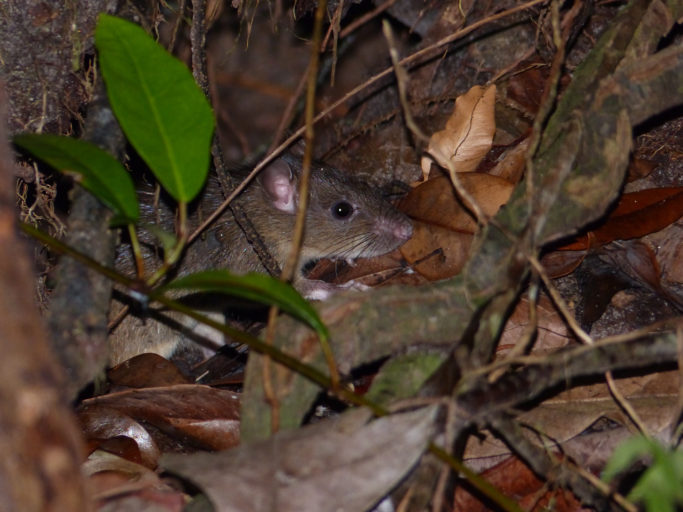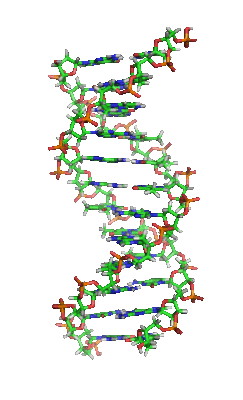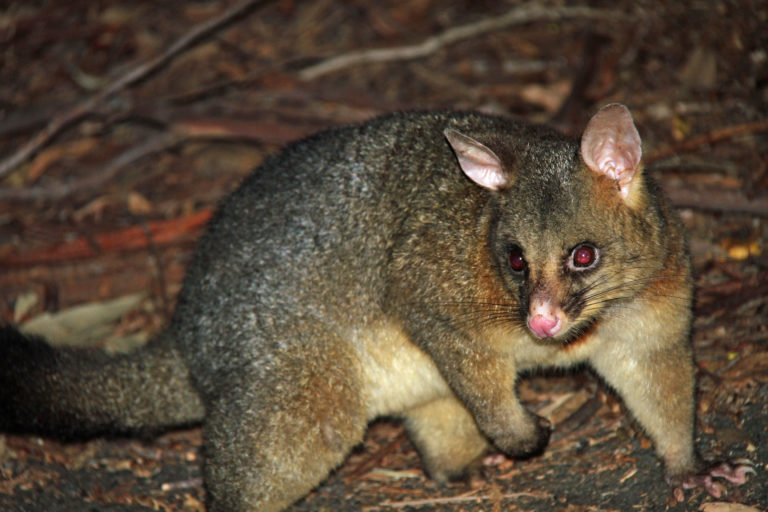Breakthrough genetic technologies are likely to play a key role in achieving a predator-free future. But it’s important that we understand what the various technologies are now – as they’re being developed – not when they’re about to be implemented.
We need to debate the issues and become as informed as possible; to know if there are risks involved in particular techniques and what safeguards will be in place. We need to be able to make informed choices, once such choices become possible. Not all genetic techniques, for example, involve ‘genetic engineering’.

But it’s not easy. We’re talking about genetics after all – DNA – ‘deep science’ if you like. Unlike the average predator trap, it’s not something we can physically see and it’s not easy to understand the working mechanism that underpins it all.

Scientists around the world do recognise the need to communicate these issues however, including a group of UK-based researchers, Tim Harvey-Samuel, Thomas Ant and Luke Alphey, who have just published a review of the various genetic mechanisms under development which have potential for control or even eradication of invasive species. Their full article is published in Biological Invasions.
“We provide an overview of the genetic mechanisms involved and explore the characteristics that may make GPM (genetic pest management) strategies suitable for eradicating invasive populations. Additionally, we discuss the primary concern surrounding the deployment of self-sustaining strategies (transgene escape) and proposed means for mitigating this concern. Finally, through the use of case studies, we consider the potential for GPM to be deployed against currently intractable invasive species from a range of taxa.”
Invasive species aren’t just a Aotearoa/New Zealand concern, although the ancient predominance of birds rather than mammals does make us somewhat special. Modern international trade means biological invasions continue to happen around the world in spite of quarantine efforts. Many invaders are insects and other invertebrates, posing health and agricultural threats. While much of the international genetic research is directed at insect species, there is potential for these techniques to also be applied to mammal pests.
Global biodiversity threat
“Invasive species are a ‘‘leading cause of animal extinctions’’ worldwide and represent one of the greatest threats to global biodiversity. Current methods for their control are in many cases inadequate to prevent continuing biodiversity loss. Toxins/pesticides, classical biological control, trapping/hunting, and habitat removal may only be suitable for certain taxonomic groups or species. Moreover, their deployment is often expensive and labour-intensive, can be associated with significant off-target effects, and may, more realistically, be aimed at continued management rather than eradication. With the rate of invasions both unprecedented and increasing, there is a serious need for the development of alternative, effective and sustainable methods for invasive species control.”
So what exactly do genetic pest management techniques do?
Depending on the design of the transgene, these GPM strategies can have different effects on their target pest population. Population suppression strategies aim to reduce pest densities or eradicate them completely, for example removing an invasive rat population from a Pacific island. Alternatively, population replacement strategies aim to modify a wild pest in order to eliminate an undesirable effect, without necessarily altering its population size. Such a strategy could involve reducing the vectorial capacity of a wild mosquito population through the release of individuals carrying a pathogen blocking transgene.”
Transgene persistence
Once a transgene is present in a population, is the change irreversible? If we change something, have we changed nature forever?
“…both population suppression and replacement strategies may vary in the extent to which their transgenes persist or spread in a target population. In self-limiting strategies, transgenes are expected to disappear from a wild population unless maintained by the periodic release of additional engineered pests. In a sense, this approach is similar to biopesticides that may require multiple applications against a target population. Conversely, in self-sustaining strategies, transgenes are expected to persist indefinitely, potentially increasing in allele frequency within the target population and/ or spreading to populations beyond the initial release area.”

Limited persistence seems like a good idea…
“A benefit of this limited persistence is that the deployment of self-limiting systems is inherently reversible: if unintended consequences were to arise from a release programme, the target population could be allowed to return to its unmodified state simply through the cessation of releases.”
So what are the disadvantages?
“Under some circumstances, the frequent releases typically required by self-limiting systems may be ecologically inappropriate or cost prohibitive. This could be the case where the adult release stage is itself damaging (e.g. some coleopteran and mammalian pests) or where the target species is difficult or expensive to rear in large numbers.”
It does, admittedly, take a bit of a mind-shift to consider breeding up and releasing pests in large numbers as a way of getting rid of their wild-born relatives. What are the alternatives to ongoing releases of transgene pests?
Selfish genes
“Self-sustaining strategies overcome these issues through engineering transgenes that persist in and spread through the population into which they are introduced. The control phenotype is therefore disseminated through a pest population by the autonomous ‘selfish’ behaviour of the transgene itself. All self-sustaining strategies are based on synthetic, selfish genetic elements (‘gene-drive systems’) that bias reproductive outcomes in their favour such that they are preferentially inherited and spread (drive) through a population.”
So how does gene drive work?
This (preferential inheritance) allows them to increase in frequency without providing a fitness benefit to individual carriers and, potentially, even while being deleterious to such carriers. If a gene expressing a particular control phenotype is closely linked to a gene-drive system, this ‘cargo’ gene will be inherited and spread through a target population along with the gene-drive. The outcome of a self-sustaining strategy (suppression or replacement) is therefore dependent on the phenotype of its linked cargo gene. It is also possible to have an effect without a cargo gene, instead using the gene-drive insertion to knock out or modify the endogenous target sequence into which it inserts.”
Transgene escape
But what if the whole thing spirals out of control? What about ‘transgene escape’?
“Perhaps the greatest concern surrounding the deployment of gene-drive systems in the field is their potential lack of control: once a drive surpasses its minimum invasion threshold it will spread autonomously. This is advantageous in maximising the effect on a pest population for a given release effort but, concomitantly, spatial confinement of a drive or reversal of its spread in the event of accidental release or unintended effects may present a significant challenge.”
So what could some of those ‘unintended effects’ potentially be?
“Concerns relating to invasive species include the spread of a gene-drive system to conspecific populations outside of the target geographic area (including to the invasive species’ native range), and the movement of a transgene into the gene pool of a native non-target species through interbreeding—both of which could have unintended ecological consequences. The consequences of this ‘transgene escape’ will depend on interactions between the technology used, the biology of the target species and the ecological context of deployment.”
It probably helps that New Zealand is an island nation with bats as our only native land mammals. Transgene rats, mice, stoats and possums aren’t remotely likely to interbreed with the native wildlife and our ocean borders mean that Australia’s native possums are likely to remain safe from mating with any future transgene-carrying NZ possums, unless New Zealand possums were maliciously carried across the Tasman.
“Deployment in relatively isolated island ecosystems may provide some limited level of geographic insulation, dependent on the dispersal capacity of the target species. However, the presence of multiple safeguards designed to mitigate the risk of transgene escape are likely to be a prerequisite for the use of low-threshold gene-drives.”

Eradication requirements
If transgene technologies are to be of use in invasive pest eradication, there are some basic requirements that this – or any other eradication method, including traditional methods – will have to meet.
“An accepted set of essential requirements for successful invasive species eradication include:
- The control technique must be able to reduce the target species at a rate faster than they are able to reproduce, at all population densities;
- Immigration into the target population must be prevented;
- Resistance to the control technique must not develop.
An additional desirable feature of a control technology is that it is transferable between target species but remains species-specific when deployed.”
One limitation of current trapping and baiting techniques is that they work well at killing predators when populations are at high numbers, but become less effective or economic where there are only a few surviving pests left. Accessibility of some of our more rugged and/or remote regions is also an issue.
“A related, independent advantage of GPM strategies is that transgenic individuals will actively disperse and seek out reproductive partners, making them uniquely efficient at targeting pests that are difficult and/or costly to reach using conventional means, for example where populations are inaccessible or cryptic. This is an advantage in inhabited areas or where there are multiple landowners, scenarios that have previously challenged or prevented eradication efforts.”
End-game tactic
“The density-dependent efficiency of GPM strategies makes them highly suitable as ‘end-game’ eradication tactics, driving invasive populations to elimination once numbers have been reduced using conventional tools or potentially after natural population collapses.”
So how might genetic pest management techniques be used with rats, for example?
“Three species of rat (black rat Rattus rattus, Polynesian rat Rattus exulans and Norway rat Rattus norvegicus) are amongst the most damaging invasives of island ecosystems. Rats and mice represent the most promising vertebrate targets for GPM strategies: they have short generation times/life-spans; they are easily and cheaply reared in large numbers; extensive literature exists on their mating systems, invasion ecology and population biology, including details relevant to GPM programmes and germ-line transformation and conditional (including tetracycline- repressible) gene expression systems are available.”
“Development of bisex-lethal transgenes in rats would benefit from preliminary research into engineering these technologies in mice. Encouraging development of female-specific strategies: in both mice and rats, transgenic lines have been created which show sex-specific expression of reporter genes. Modelling indicates that large, established rat populations could be eradicated in less than 20 years using female specific GPM strategies. This timeframe would diminish substantially if combined with existing control methods.”
So once the techniques and technologies are fully developed, eradication of rodents could take less substantially than 20 years – now that’s something to start thinking and talking about.
The full research review is published in Biological Invasions and is freely available through Springerlink.com.

